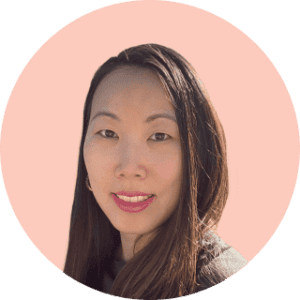Femia > Health Library > Getting Pregnant > Planning pregnancy > Can you get pregnant while breastfeeding? Everything you need to know
Can you get pregnant while breastfeeding? Everything you need to know
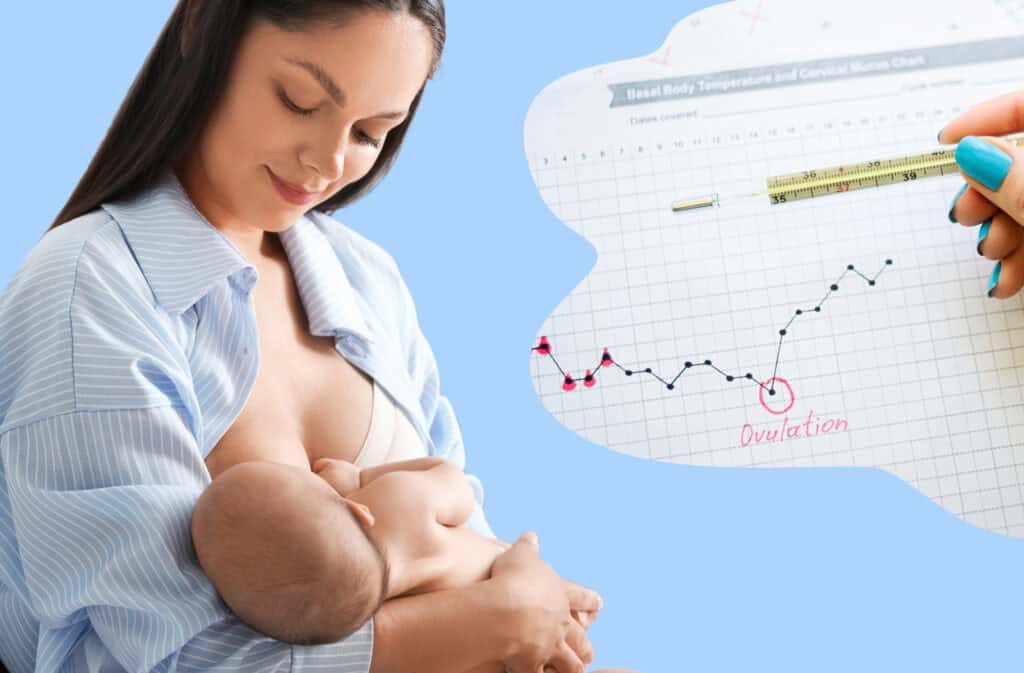
- Updated Feb 10, 2025
- Published
CRAFTED BY HUMAN
Crafted by human At Femia, we provide accurate and up-to-date information at every stage of your journey, from trying to conceive, pregnancy and postnatal support. All content is created by a real person based on in-depth research and own professional experience. Femia ensures that you will receive expert advice, strict accuracy and a personalized approach from our authors/medical experts. Learn more about our editorial policy.
FACT CHECKED
Fact checked At Femia Health, we maintain the highest standards of editorial excellence in delivering content focused on helping you conceive, guiding you through pregnancy, and supporting you postpartum. Explore our content review principles to learn how we ensure the accuracy and quality of our health and lifestyle tips for every stage of your journey.
You can, in fact, get pregnant while breastfeeding. However, it is less likely to happen while you are exclusively breastfeeding and during the first six months after giving birth.
This is because breastfeeding can suppress ovulation, particularly when done frequently and exclusively. For pregnancy to occur, your menstrual cycle needs to return, and it must be an ovulatory cycle—meaning you are releasing an egg during your cycle. Understanding the reasons behind this and ways to get around it might help you get pregnant again, if you wish to do so, or take precautions.
Understanding the relationship between breastfeeding and fertility is a great way to plan for future pregnancies and manage your reproductive health. Let’s discover the signs of returning fertility and examine your chances of getting pregnant while breastfeeding.
Can you get pregnant while breastfeeding?
Getting off the pregnancy rollercoaster does not mean that you could not get on it again soon after giving birth. The idea that breastfeeding acts as a foolproof method contraception is just another pregnancy myth.
Chances of getting pregnant while breastfeeding
It is possible to get pregnant while breastfeeding, but it is less likely due to hormonal changes your body is undergoing at that time. The chances of getting pregnant while breastfeeding are lower, especially if you’re exclusively breastfeeding and within the first six months postpartum.
However, once your menstrual cycle returns and you ovulate, pregnancy becomes possible. This is a natural contraception mechanism, but it is not absolutely reliable. After a temporary pause, your period will make a comeback, as well as ovulation.
Do you ovulate while breastfeeding?
Some women may experience their fertility coming back only after they have stopped breastfeeding, while some may feel ready to conceive again just weeks after delivery, and they successfully do so. How does your body decide when to start ovulating again? And, even more importantly, do you ovulate while breastfeeding?
This is a complex subject. From an evolutionary perspective, the female body has adapted to provide a break between pregnancies. This temporary infertility associated with breastfeeding is also known as lactational amenorrhea (LAM).
Worry not; amenorrhea simply means that there is a lack of periods. As this happens during breastfeeding, while you produce milk or lactate, it is no wonder that hormones play a part in it.
Is breastfeeding a form of birth control?
When the baby is suckling, your body produces oxytocin, which stimulates the production of prolactin and makes sure you have enough milk for your baby. High levels of prolactin during breastfeeding send a signal to the brain that keeps the levels of luteinizing hormone low, therefore suppressing the onset of ovulation.
However, lactational amenorrhea is only a temporary method of birth control and requires exclusive, frequent breastfeeding. If you reduce the frequency of breastfeeding, your ovulation may return soon after.
Femia helps you understand your symptoms and when to take action
Signs of returning fertility while breastfeeding
You might be able to feel that your body is back on its natural ovulatory track. Let’s discuss how to notice the symptoms and signs of returning fertility while breastfeeding.
👉Find out more: Signs of ovulation after giving birth
Changes in cervical mucus
When ovulation kicks in, your vaginal discharge may become clear, slippery, thin, and stretchy. You might notice a secretion that looks a bit like raw egg white.
This happens as a result of your sex hormones rising, regardless of breastfeeding. Worry not—changes in vaginal secretion are a perfectly normal sign that your ovulation is coming back.
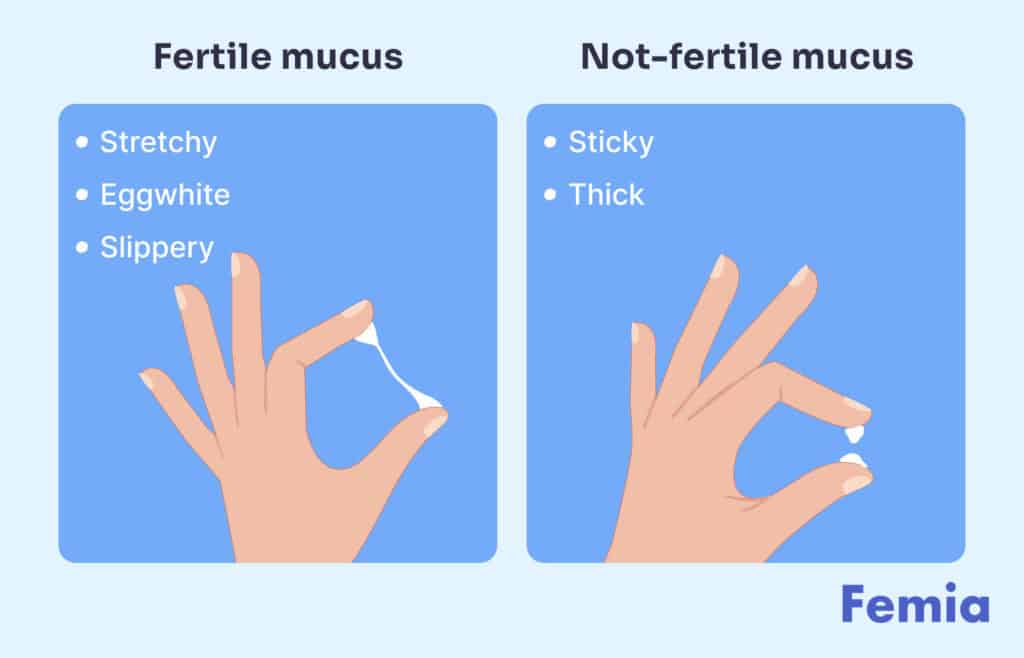
Ovulation pain
Ovulation happens when the egg gets released from your ovary. Some ladies experience pain when this happens, a sensation that is also known as mittelschmerz.
Ovulation pain may affect over 40% of women during their reproductive age. It is usually felt on one side of the lower abdomen, near the ovary. The intensity can vary from mild aches to severe pain.
Why does ovulation sometimes hurt? The rise of luteinizing hormone (LH) levels triggers ovulation but also stimulates the smooth muscles in the ovary area. The muscles begin to contract and sometimes, cause pain.
Additionally, the conventional belief is that the pain may be caused by follicular distention—the stretching of the ovarian follicle before it releases the egg. Although this explanation is widely accepted, some sources question it and do not provide specific reasons for their differing view. Thus, both mechanisms are considered when discussing the potential causes of ovulation pain.
Increased libido
When ovulation happens, your egg travels from the ovary to the fallopian tube, where it patiently awaits to be fertilized by sperm. The entire aim of this process is to get you pregnant. So, many women experience a corresponding rise in sexual desire.
One study found the peak in sex drive to happen three days before LH levels rise, and another small study showed that sex occurs 24% more often during those six days before ovulation. In short, feeling the urge for intimacy with your partner might be another telltale sign of returning fertility while still breastfeeding.
Basal body temperature rise
Ovulation triggers a small but detectable rise in normal basal body temperature (the lowest temperature of your body while resting). It is not something that you would otherwise notice, but rigorous monitoring may help you understand when your chances of getting pregnant increase.
Of course, elevation in basal body temperature can happen due to other reasons. Take this sign with a grain of salt, and consider other signs (or lack thereof) of ovulation when interpreting a rise in body temperature.
Light spotting
Some women experience light bleeding or spotting around the time of ovulation. This is usually not a reason for concern, but a normal sign of ovulation that can be mistaken for a light period.
Estrogen levels steadily climb before ovulation and drop right after. Then, progesterone levels begin to increase. This switch in balance between the two hormones may sometimes cause spotting.
Breast tenderness
Hormonal fluctuations can also cause mild breast discomfort or tenderness. It happens to many women throughout their reproductive age.
While breastfeeding, your breasts might feel sore and sensitive for other reasons. Still, tenderness paired with other signs of ovulation might signal that your ovulation is slowly making its way back.
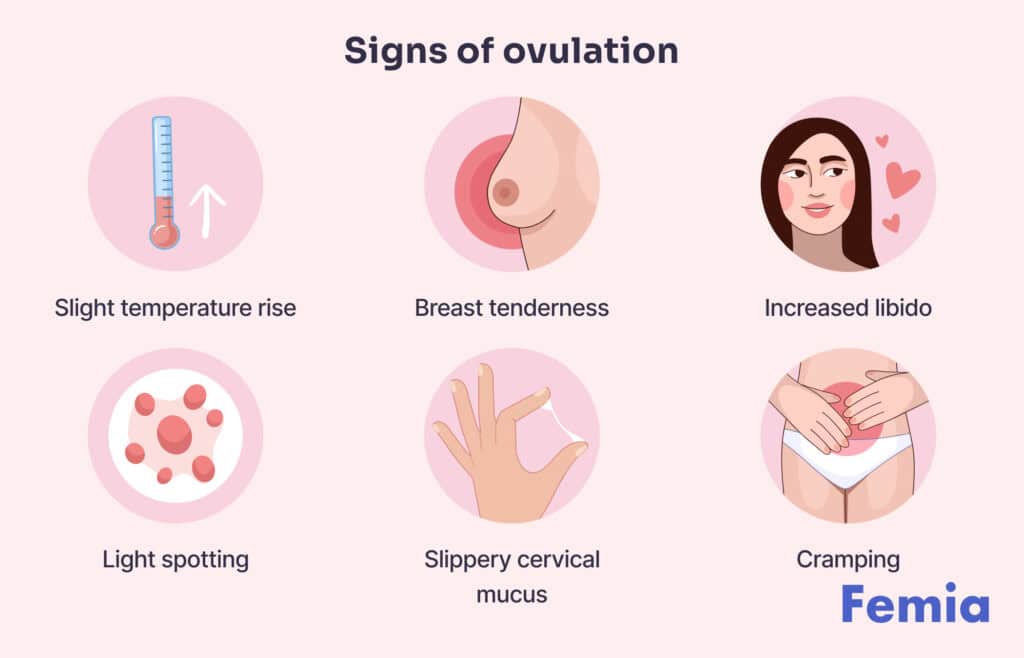
Signs of ovulation while breastfeeding, but no period?
You might be wondering: could I be experiencing signs of ovulation even if my periods haven’t returned? How can I tell if I’m ovulating while breastfeeding? Let’s break it down.
- Cervical mucus changes. Pay close attention to your vaginal discharge. If it changes in color and consistency, you might be ovulating again.
- Basal body temperature changes. Tracking basal body temperature can help detect ovulation. Monitor the changes first thing in the morning on a daily basis, and write it down in a chart. Most women experience a rise of around 0.5–1°F, according to the American College of Obstetricians and Gynecologists. So you need a thermometer that can measure at least up to a tenth of a degree!
- Ovulation predictor kits. Some women use ovulation predictor kits to detect the rise of luteinizing hormone in urine. These kits can be found in most drug stores, and they usually come with five to seven sticks that you can use for several days. If a raise in luteinizing hormone is detected, it will turn a certain color or display a positive sign.
Femia helps you understand your symptoms and when to take action
Chances of getting pregnant while breastfeeding
If you are eager to get pregnant again soon after giving birth, learning about lactational amenorrhea might feel discouraging. Although it is possible, what are the actual chances of getting pregnant while breastfeeding?
According to the National Health Service, 2 in 100 women who do not breastfeed exclusively will get pregnant again within six months of giving birth. Keep in mind that lactational amenorrhea (LAM) requires consistent, exclusive breastfeeding. That means, you need to breastfeed your baby at least every 4 hours during the day and at least every 6 hours during the night
With perfect use LAM is 98% effective against pregnancy for the first 6 months after giving birth.
Lactational amenorrhea disappears in most women six months after giving birth, but fertility can return more quickly if you reduce the frequency of breastfeeding. This means increasing the time between breastfeeding to over four hours during the day or six hours at night or introducing formula or other foods to your baby’s diet.
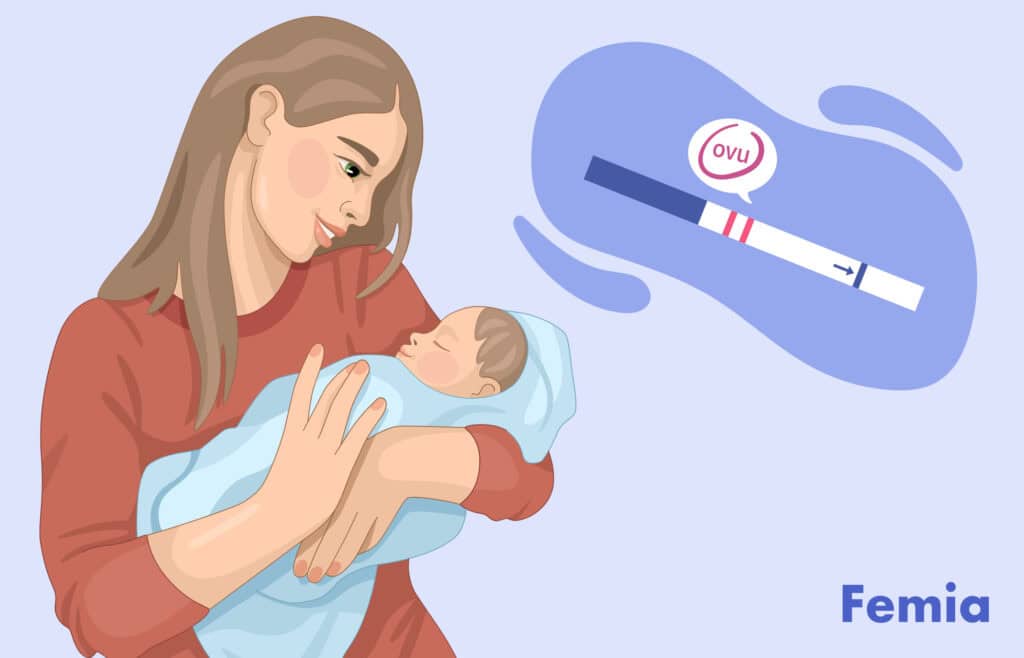
What forms of birth control can I use if I’m breastfeeding?
If you’re breastfeeding and want to avoid pregnancy, there are several safe and effective birth control options. You can use progestin-only methods like the mini-pill, hormonal IUDs, and the implant, which won’t affect your milk supply. Barrier methods, such as condoms or diaphragms, are also great choices and hormone-free. If you’re within six months postpartum and exclusively breastfeeding, the Lactational Amenorrhea Method (LAM) can be effective, but only if your period hasn’t returned yet. Always check with your healthcare provider to find the best option for you!
Questions from the Femia community
What are the early signs of pregnancy while breastfeeding?
The early signs of pregnancy while breastfeeding are not that different from the usual early signs of pregnancy. If you experience spotting, miss a period (given that your period has returned), or feel nauseous and tired all the time, you might want to take a pregnancy test. However, a breastfeeding-specific sign might be a change in milk supply or breastfeeding behavior.
How soon can fertility return after reducing breastfeeding?
The time it takes for your fertility to return after reducing the frequency of breastfeeding will be very individual. It can take a couple of weeks to several months before your next ovulation and subsequent period. That’s why it’s important to look for signs that ovulation has returned, so you’ll be prepared whether your plans include another pregnancy right away or not.
Can breastfeeding affect the accuracy of ovulation tests?
Since breastfeeding involves hormonal changes and your cycle may not yet be regular, the results of ovulation tests can be unreliable. False negatives and false positives are possible. Always interpret ovulation signs altogether instead of relying strictly on one sign.
Should I stop breastfeeding if I want to conceive?
Not necessarily. However, reducing the frequency of breastfeeding might help with conception. You can try to reduce feedings during the night or introduce some additional food to your newborn’s diet. Still, adequate nutrition for both you and your baby is essential. Reach out to your healthcare provider to receive personalized guidance.
Remember, it is possible to conceive while breastfeeding—it might just take a bit more time.
The bottom line
Whether you want to get pregnant again right away or take a break while raising your newborn, there’s one important question to answer: Can I get pregnant while breastfeeding?
The answer is, yes. It is entirely possible to get pregnant while breastfeeding, although a bit more challenging due to the natural process of lactational amenorrhea. Postpartum hormones suppress your ovulation, but only temporarily. If you are not exclusively breastfeeding or have been doing so for over six months, there is a chance to get pregnant again.
Just because you start seeing your period again doesn’t mean you’re ovulating. It’s important to know the difference between just getting your period back and actually ovulating—they’re not the same!
While using breastfeeding as a way to delay pregnancy (called lactational amenorrhea) can lower the chances of getting pregnant, it’s not the most foolproof method. It’s a good option if you prefer to avoid hormonal birth control and are okay with the possibility of its higher chance of not working as well compared to other methods.
Keep an eye out for signs like changes in vaginal discharge, ovulation pain, light spotting, a rise in your basal body temperature, and increased sensitivity in your breasts. Ovulation predictor kits can also be handy in checking if your fertility is returning, although keep in mind that hormonal changes from breastfeeding might affect their accuracy.
For the best advice, it’s a great idea to chat with your healthcare provider about your future plans.
References
- Brott, Nathan R., and Jacqueline K. Le. “Mittelschmerz.” StatPearls, StatPearls Publishing, 2024. PubMed, http://www.ncbi.nlm.nih.gov/books/NBK549822/.
- Bullivant, Susan, et al. “Women’s Sexual Experience during the Menstrual Cycle: Identification of the Sexual Phase by Noninvasive Measurement of Luteinizing Hormone.” Journal of Sex Research, vol. 41, Mar. 2004, pp. 82–93. ResearchGate, https://doi.org/10.1080/00224490409552216.
- Calik-Ksepka, Anna, et al. “Lactational Amenorrhea: Neuroendocrine Pathways Controlling Fertility and Bone Turnover.” International Journal of Molecular Sciences, vol. 23, no. 3, Jan. 2022, p. 1633. PubMed Central, https://doi.org/10.3390/ijms23031633.
- “Getting Pregnant (or Not!) While Breastfeeding | Australian Breastfeeding Association.” Australian Breastfeeding Association, https://www.breastfeeding.asn.au/resources/getting-pregnant-while-breastfeeding. Accessed 22 July 2024.
- “Natural Family Planning.” National Health Service (NHS), 29 Feb. 2024, https://www.nhs.uk/contraception/methods-of-contraception/natural-family-planning/.
- “Ovulation Bleeding – Causes, Symptoms & Treatment Options.” Narayana Health, https://www.narayanahealth.org/blog/ovulation-bleeding-causes-symptoms-treatment-options. Accessed 22 July 2024.
- “Ovulation Bleeding: How to Identify Spotting between Periods.” Medical News Today, 24 July 2019, https://www.medicalnewstoday.com/articles/325847.
- “Ovulation Home Test: MedlinePlus Medical Encyclopedia.” MedlinePlus, https://medlineplus.gov/ency/article/007062.htm. Accessed 22 July 2024.
- “Periods and Fertility in the Menstrual Cycle.” National Health Service (NHS), 9 Apr. 2018, https://www.nhs.uk/conditions/periods/fertility-in-the-menstrual-cycle/.
- “Postpartum Birth Control.” ACOG – The American College of Obstetricians and Gynecologists, https://www.acog.org/womens-health/faqs/postpartum-birth-control. Accessed 21 July 2024.
- “Trying to Get Pregnant? Here’s When to Have Sex.” ACOG – The American College of Obstetricians and Gynecologists, https://www.acog.org/womens-health/experts-and-stories/the-latest/trying-to-get-pregnant-heres-when-to-have-sex. Accessed 22 July 2024.
- Wilcox, A. J., et al. “On the Frequency of Intercourse around Ovulation: Evidence for Biological Influences.” Human Reproduction, vol. 19, no. 7, July 2004, pp. 1539–43. Silverchair, https://doi.org/10.1093/humrep/deh305.

Discover natural ways to boost estrogen levels. Learn about dietary changes, supplements, and lifestyle habits that can help balance hormones. Expert advice from Femia.
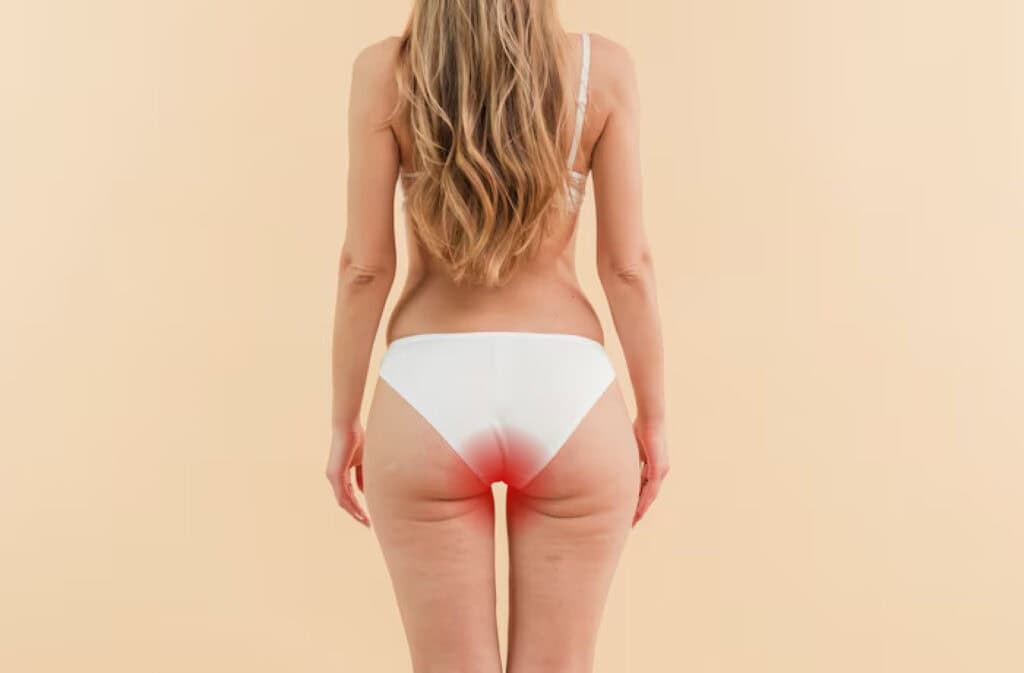
Know how to identify signs of postpartum hemorrhoids, underlying causes, and different treatment options available for your healing journey after childbirth.

Discover everything you need to know about female fertility hormones and tips to balance essential reproductive hormones and support a healthy conception in women.

